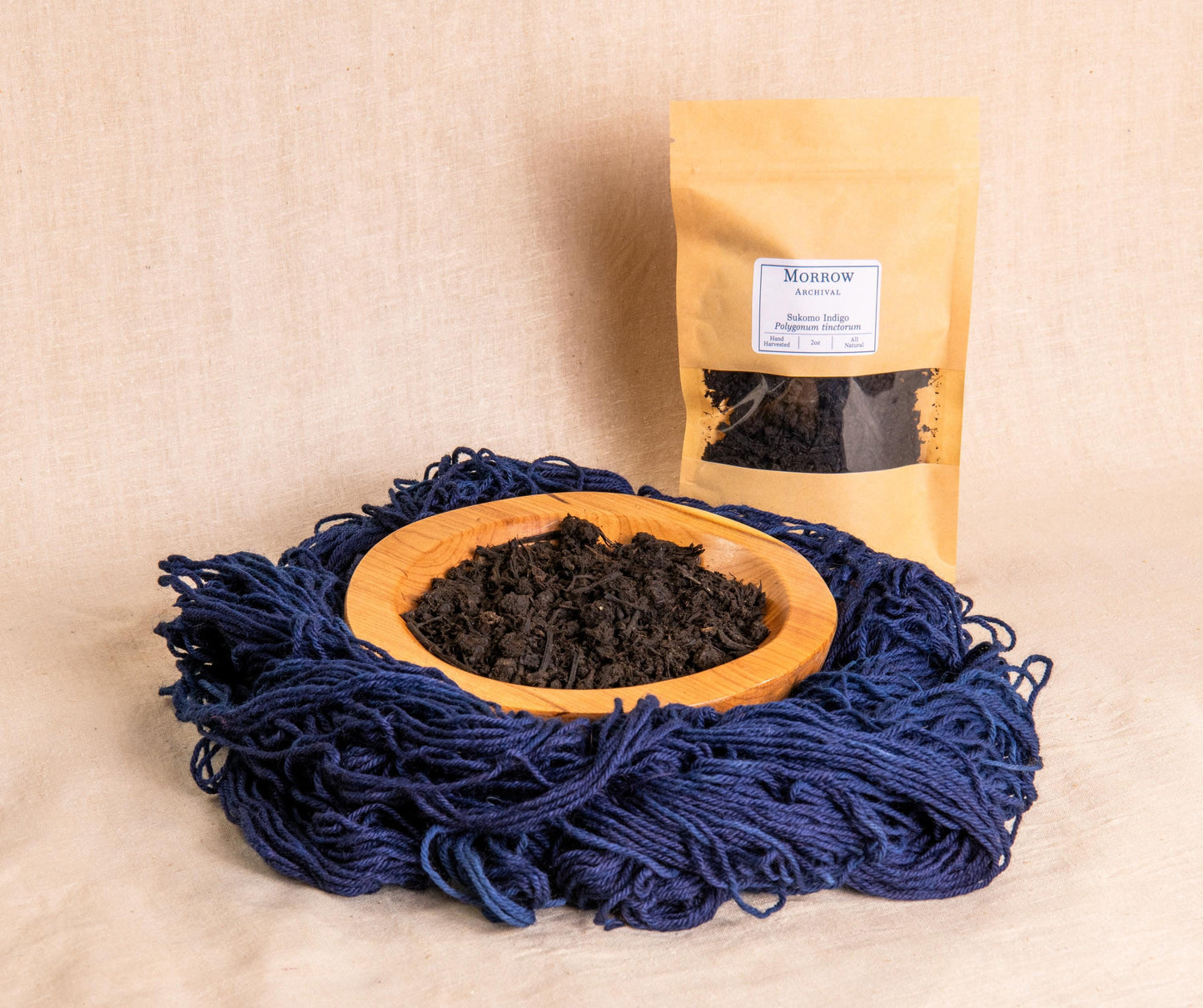Sukomo Indigo Dye
Sukomo Indigo Dye
Couldn't load pickup availability
Share

Description
Sukumo is the traditional Japanese form of natural indigo dye, made from the dried and composted leaves of Polygonum tinctorium (commonly called Japanese indigo or Tadeai). Crafted through a months-long aerobic fermentation process, the indigo is transformed into a rich, composted dyestuff that forms the heart of the Japanese Ai-zome (indigo dyeing) tradition. When reduced in a natural or chemical vat, sukumo yields shades of deep midnight blue, smoky steel, and bright sky blue, depending on dip count and fiber type. The texture and character of sukumo-dyed fabrics are considered unmatched—offering depth, softness, and a distinct hand-feel unique to this heritage method.
Recommended Use
Use in a fermentation vat or reduced vat with an alkaline agent (such as wood ash lye, soda ash, or lime) and a reducing agent (like fructose, madder root, or thiourea dioxide). Works beautifully with multiple dips to build up color and fastness. Ideal for cotton, linen, silk, and wool. Sukumo excels in resist dyeing (katazome, shibori) and traditional stencil work.
Historical Significance
Sukumo lies at the heart of Japan’s indigo culture, cultivated and prepared since at least the 10th century CE. During the Edo period (1603–1868), Ai-zome became a symbol of everyday beauty, artisan craft, and rural resilience. Sukumo was produced by indigo farmers through the laborious “aiba” composting method—fermenting, turning, and aging indigo leaves through winter to produce a high-quality, water-soluble dye base. The resulting dye was so central to Japanese life that indigo became known as “Japan Blue,” seen in everything from workwear and kimono to binding threads and sacred garments.
Dye Details
Name: Indigotin from fermented Polygonum tinctorium
Origin: Tokushima Prefecture, Japan (traditional source)
Dye Type: Fermented botanical compost
Recommended Fibers: Cotton, linen, silk, wool, hemp, and bast fibers
Lightfastness: Excellent on all natural fibers
Vat Components (for Sukumo fermentation vat):
Sukumo (20–30g/L starting)
Alkaline base: wood ash lye or soda ash
Natural reducer: wheat bran, rice husk, sake lees, or fructose
Heat & time: maintain at 25–35°C for vat fermentation over several days
Modifiers for tone control:
Dip duration and frequency
pH balance
Reduction strength
Packaging
Available in resealable, eco-friendly kraft pouches with detailed vat setup instructions for both natural and quick-reduction methods. Hand-harvested and fermented by Japanese indigo farmers using traditional techniques.

